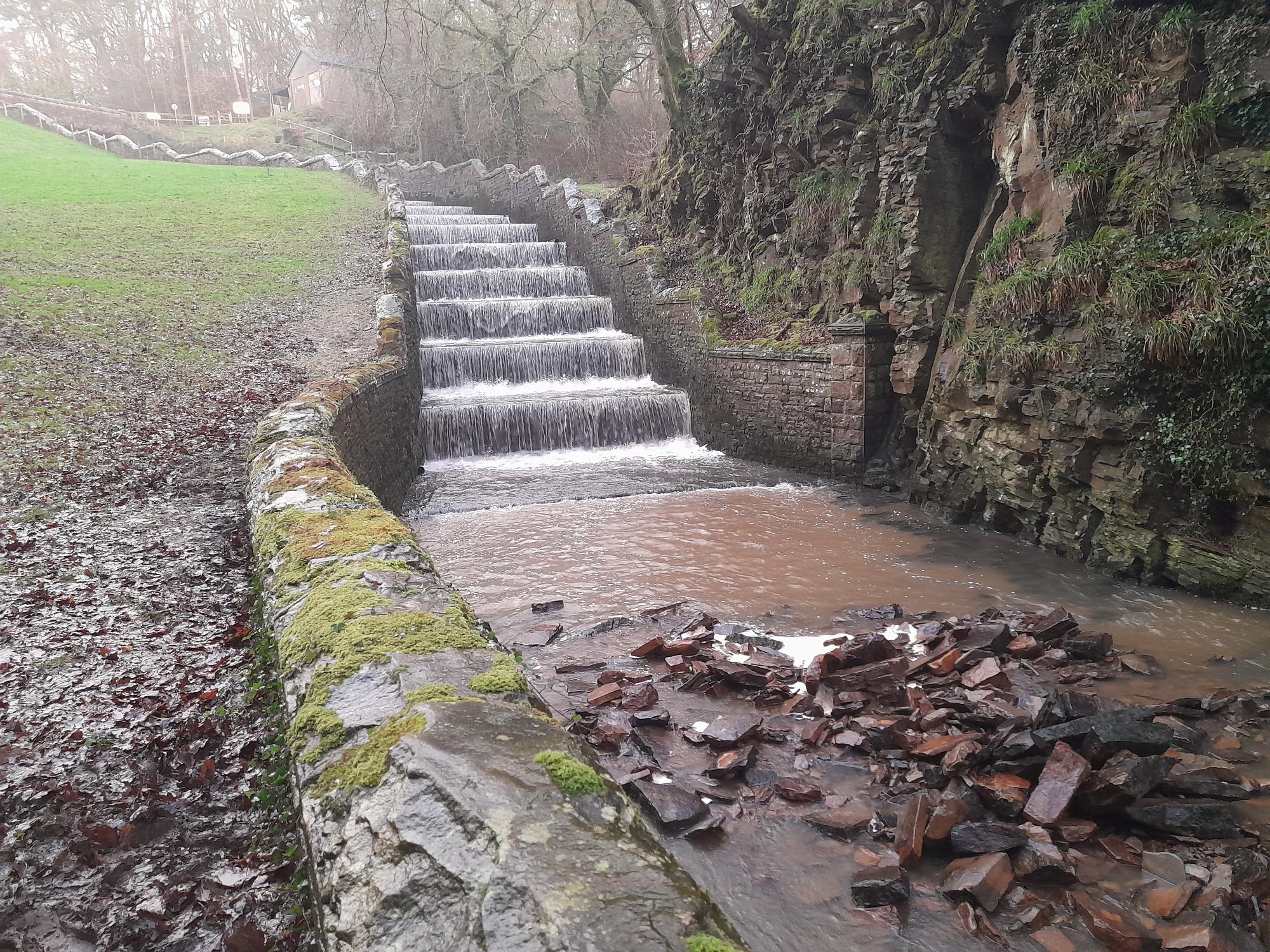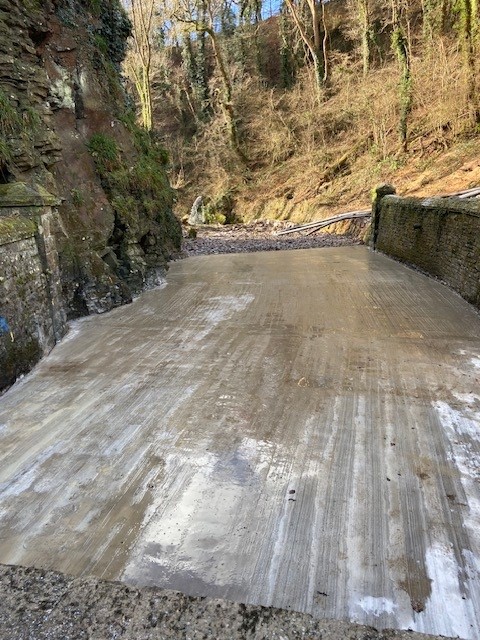Failure of stone apron at toe of masonry stepped spillway
Publish date
16 September 2025
Case ID#
3330
Title
Failure of stone apron at toe of masonry stepped spillway
Nation
Wales
Regulator reference no.
72
Legal status
Statutory
Reservoir type
Impounding
Reservoir capacity
500,000 - 1M m3
Year of construction
1850 - 1899
Main construction type
Earth fill embankment
Dam height
15 - 29.99 metres
Dam flood category
A
Hazard class
High-risk reservoir
Reservoir use
- Recreation or general amenity
- Water supply
Owner type
Limited company
Date & Time of incident
01 April 2024 - 12:00
Date incident closed
Observations that caused the incident to be declared
- Water flowing outside of engineered channels
Describe the incident
Water was noted emerging at several places on the vertical face of the lowest step
in the Spillway #1 cascade. Water was noted emerging at several places on the
vertical face of the lowest step in the spillway. Reservoir water level controlled to
maintain the prescribed level. Following a reduction in levels it became apparent
that the downstream spillway apron had failed in the high flows and eroded the
underlying material down to bedrock. The spillway is a stepped masonry spillway
but the masonry terminates at the toe and becomes a placed stone apron until it meets the natural watercourse.
Supporting photos

Natural processes which initiated or contributed to the incident
- Flood - within dam design capability
What were the main contributing factors to the incident occurring?
Dam factors
- Other dam factors (describe below)
External factors
- None
Shortcomings
- Design shortcoming
What was the root cause of the incident?
Cracks in underlying rock strata combined with heavy rainfall causing uplift pressure in an area beyond the toe of the engineered spillway.
Impacts on the reservoir
- Spillway or overflow - failure or instability
Supporting photos
Describe any human factors which influenced the incident
None
Describe any instrumentation at the reservoir and how this was used in warning of the incident or providing monitoring during the incident
The instrumentation onsite was operable and functioning normally ahead of the
incident. During the incident the check in frequency of the telemetry was increased
to every 15 minutes to allow close monitoring of changes in level.
Was instrumentation effective leading up to and during the incident?
Yes
Describe any assistance by external parties and impacts on the downstream population
Summary of studies or investigations undertaken
In catchments that have a flashy nature it can be possible for the reservoir to rapidly
peak and levels to subside between visits. In this the rates of rise and fall of the
Reservoir level around the time of the peak reservoir level were >500mm/hour.
The rock outcrop to the lefthand side of the spillway (an area that was cut through when forming the spillway channel has several cracks that extend vertically
through the structure. One of these cracks is alongside the spillway and runs underneath the spillway apron at its upstream end. It is likely that the heavy rainfall
experienced alongside the higher levels of ground water likely caused uplift
pressures under the spillway apron.
Lesson 1
- Emergency response
On-site plan needs to check the access arrangements for delivery of pumps is adequate.
Lesson 2
- Emergency response
Onsite plan should ideally provide multiple local suppliers and checks made that they can provide all suitable grade aggregates, including small 5mm - 10mm.
Lesson 3
Lesson 4
Closing comments
A presentation on this incident is available from the British Dam Society Young
Professionals Forum at https://url.uk.m.mimecastprotect.com/s/TcWeC7LW2uWPG3nIrSGso6_Ci?domain=youtube.com
Supporting photos
